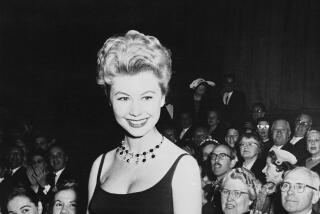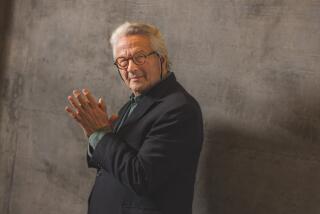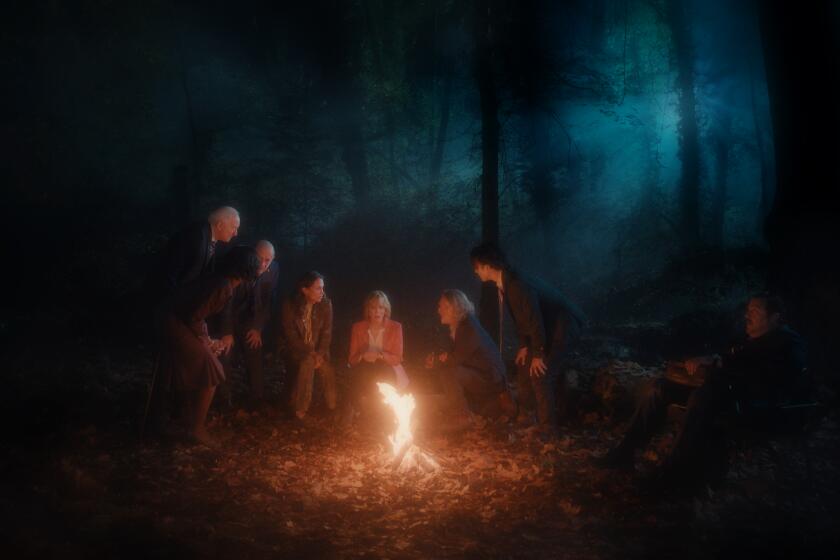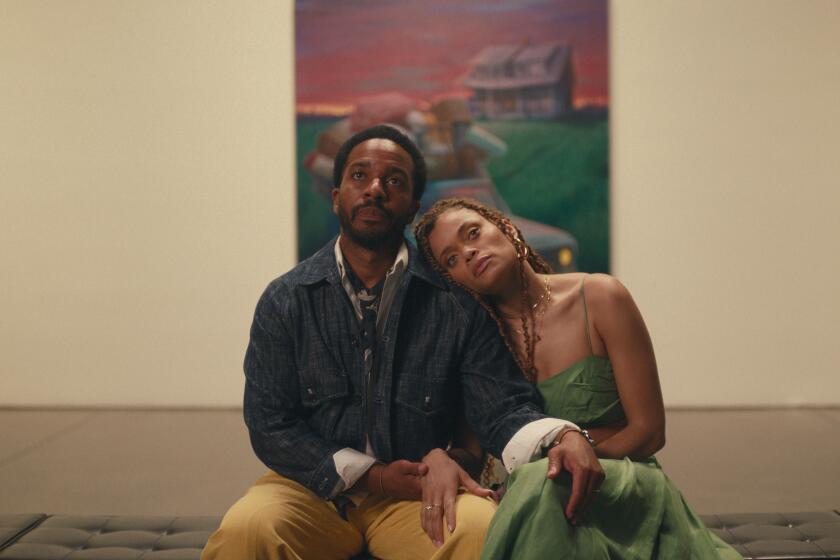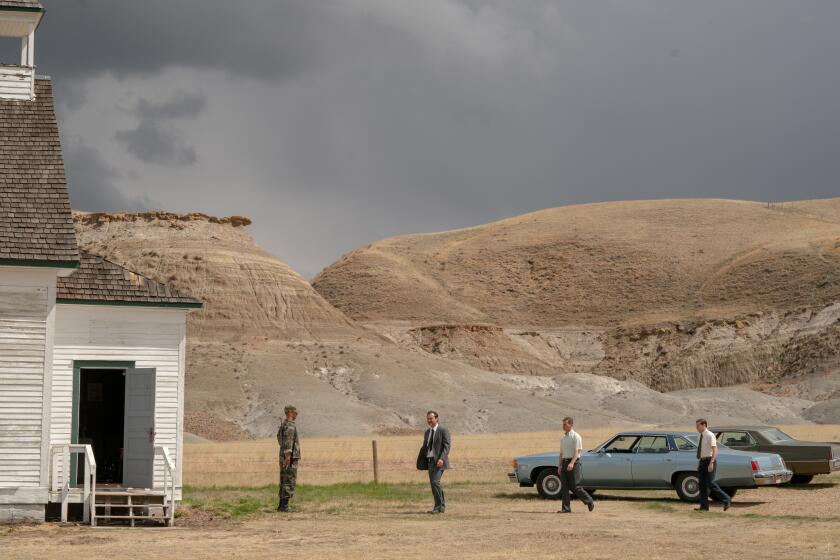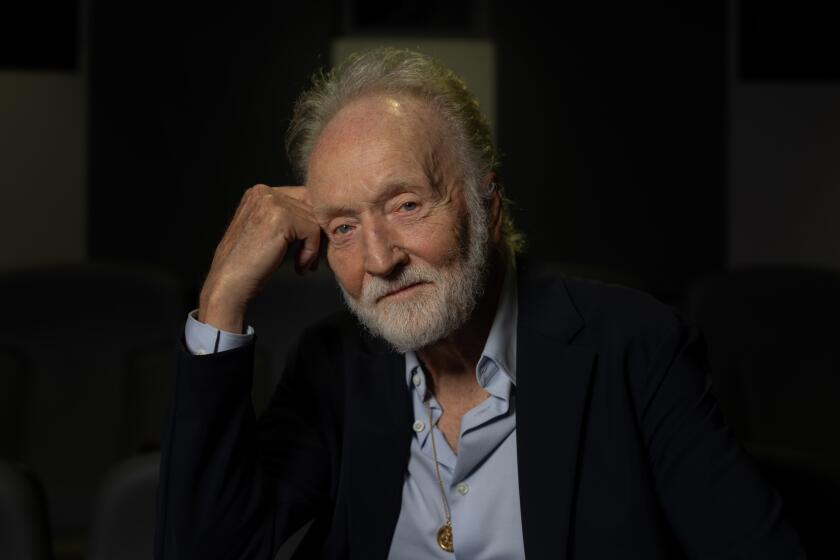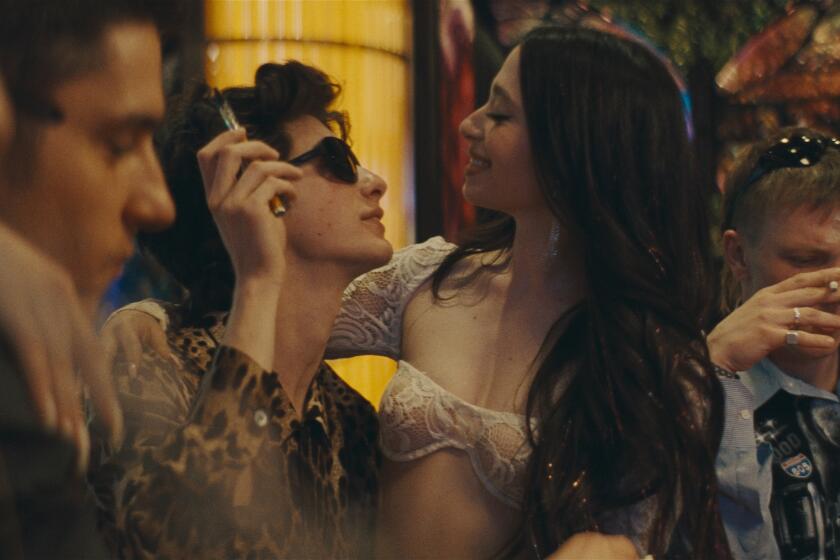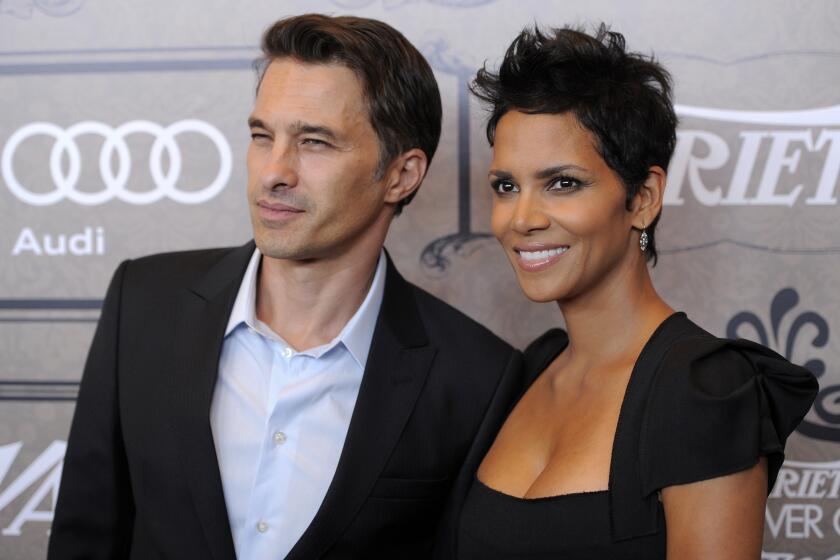Lessons in Real Life: CSUN Film Students Learn on Location
Even in 108-degree Las Vegas heat and working 12 to 14 hours a day, Cal State Northridge film student Mark Levy thought himself lucky to work on the feature film “Queen of Diamonds.”
As part of the new Education for Artistry program at CSUN, Levy and four other film students got firsthand experience in August under the guidance of award-winning writer and director Nina Menkes and a crew of professional film makers.
The students worked 22 days on location in Las Vegas and at other sites.
“In film school, we don’t have any experience with 35-millimeter film and industry-standard equipment,” said Levy, 25, who lives in West Los Angeles. “After working as second assistant cameraman on this film, I feel I’m ready to go to work as a professional. I’m not afraid to make the jump from film school to the real world.”
The new, three-year program, which started at CSUN’s radio-television-film department in the spring, not only provides practical experience, it is intended to help women and minorities find work in the still largely male-dominated motion picture industry, said Menkes, who also teaches part time at CSUN.
The program “is affirmative action on every level,” Menkes said. “First, the director and screenwriter in future years will always be a woman or a minority. All members of the professional crew are female or minority.”
In terms of their credentials, “if it were a tie between a Caucasian male and a woman or a minority, you would choose a woman or a minority,” she said.
In “Queen of Diamonds,” which Menkes wrote and directed, the leading role is a young woman blackjack dealer who experiences a transformation of sorts in an exploitative and degenerate environment.
“It’s very much an evocation of a prototypical, American hell,” Menkes said. “Yet there’s a flowering within that hellish environment.”
Menkes describes her present film as “surrealistic and radical.” But it’s not only the film’s substance that strays from the norm. Its financing proved unorthodox too.
The average full-length Hollywood feature is budgeted at about $12 million but can go higher than $40 million.
“This is like a $5-million film being made on a shoestring budget,” Menkes explained. “We had to get everything donated, from hotel accommodations to food to our camera package, our grip package, all the locations, our lights and sound equipment, even part of our film.
“It’s all kind of a miracle.” She laughed. “We even got three elephants for the price of one.”
She is hoping that post-production facilities will also be donated. Thus, at this point, all the budget figures are not available. But Menkes estimates that the principal photography alone will run about $30,000, of which $20,000 is a grant from the National Endowment for the Arts.
Menkes acknowledges that it would have been tremendously difficult to find traditional financial backers. “You can’t expect investors to put up money unless you can give them a sense that they’ll get their investment back,” she said.
For “Queen of Diamonds,” Menkes and the CSUN apprentices petitioned numerous companies for donations. The director said she thinks that the firms responded because of the film’s unusual nature.
“Most films about Las Vegas are always about the players,” Menkes said. “This one is about people on the other side of the table.”
She said the donors were also impressed by the film’s granting student apprenticeships. “And donors saw this as a good P.R. opportunity,” she said. In exchange for their contributions, companies will receive screen credit.
Menkes, whose parents are from Israel, grew up in Berkeley. At 33, she has completed a variety of short films, as well as her first feature film, the experimental “Magdalena Viraga,” which won a 1986 Los Angeles Film Critics Award.
The limited funds available for “Queen of Diamonds” were not a deterrent. “I’ve proved that I don’t need $10 million to make a film,” she said. “It can happen as long as I have a good idea. A lot of people I went to UCLA film school with are waiting for their break. I’m not waiting. I’m just making my film.”
The principals and crew arrived in Las Vegas on Aug. 5, with actual shooting starting the next day. The crew shot several scenes in Bob Stupak’s Vegas World Casino and used various hotels and streets, including Las Vegas Boulevard, where a parade sequence was staged.
Photography in Las Vegas wrapped Aug. 22. Palm Desert and the Salton Sea are the film’s final locations.
Most in the cast of 75, including Menkes’ sister, Tinka, who plays the lead, are professional actors. To create a semi-documentary feeling, however, Menkes used actual casino visitors who volunteered as extras in non-speaking roles.
The five CSUN apprentices were chosen through an arduous selection process, Menkes said.
Besides Levy, the others were Kelley Miller of Sun Valley, a postgraduate student who worked as associate producer and assistant director; Judy Aguilar of San Fernando, location manager; Jeanette Brisacher of Fillmore, production coordinator, and Drew Schnierow of Encino, production manager.
Since none of the students had professional film production experience, they worked closely with a professional crew: Jill Updike, first assistant cameraman; Cheng Sim Lim, chief assistant electrician; Rueben Domingo, sound mixer; Courtenay Marvin, set designer, and Heather Carson, line producer.
Miller, 22, said: “I shocked and amazed myself. I was afraid I was going to be a production assistant for the rest of my life. But I proved to myself I’m worthy of doing something other than serving coffee. I gained confidence. I learned to work with people.
“Nina taught us to work our craft, to do what we want to do. And after the things I’ve done on this film, I feel like I can do anything.”
More to Read
Only good movies
Get the Indie Focus newsletter, Mark Olsen's weekly guide to the world of cinema.
You may occasionally receive promotional content from the Los Angeles Times.

